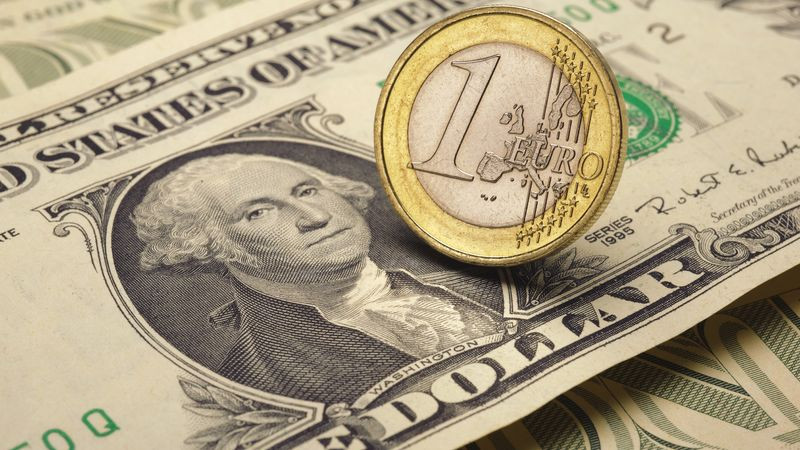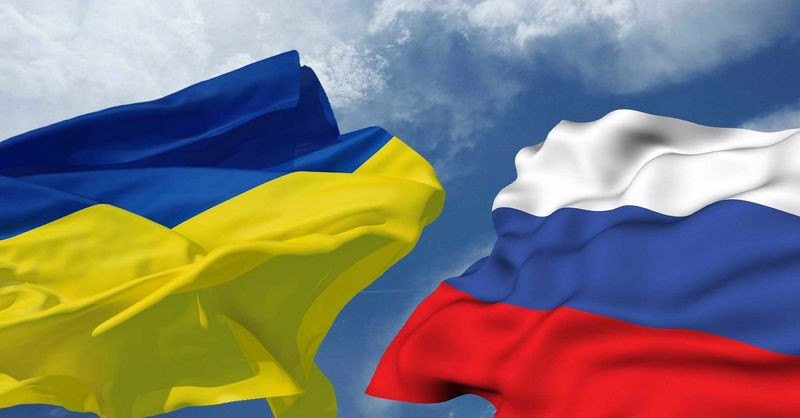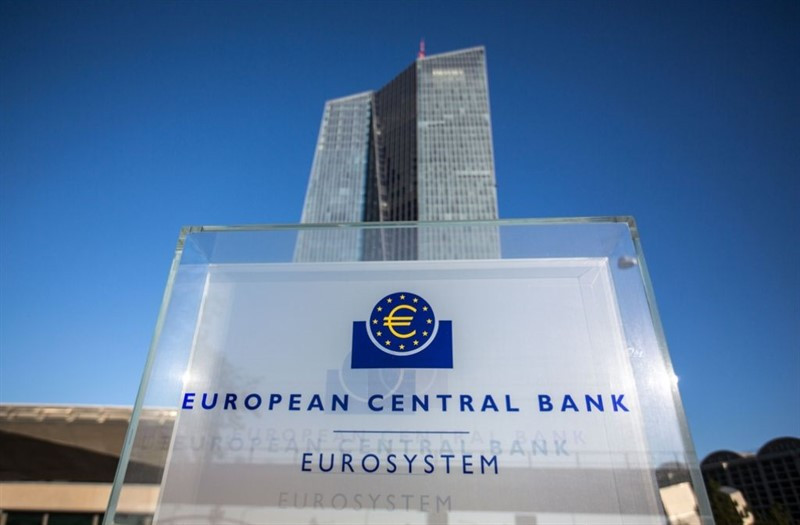
On Tuesday, the defensive greenback came under pressure and had to break a three-day winning streak, while risky assets enjoyed a recovery thanks to signals of easing tensions on the geopolitical front.
The Russian Defense Ministry announced that units of the Western and Southern military districts are beginning to return to their bases from exercises near the border with Ukraine. A day earlier, Russian Foreign Minister Sergei Lavrov announced the country's readiness to continue dialogue with the West.
Investors took this news with an investment. Amid renewed optimism, the key Wall Street indices returned to the green zone and ended Tuesday's trading with growth. In particular, the S&P 500 gained 1.58%, reaching 4471.07 points.
Meanwhile, the USD index fell by 0.3%, losing the points scored on Monday, and closed at 96.00.
Taking advantage of the weakening of the US currency and shrugging off its recent losses, the EUR/USD pair jumped by almost 60 points and ended the day with an increase of 0.5%, at 1.1360.
Although the degree of tension in eastern Europe has somewhat decreased, including due to the continuation of negotiations between Moscow and the West, experts warn that it is too early for players to fall into euphoria. Don't think the worst is over after one day of good news, they say.
"As for how Russia will act further. According to the plan. And what will it consist of? From the real situation on the ground. Who can answer how it will develop? No one yet. It depends not only on us. But we intend and will strive to negotiate with our partners on the issues that we have raised to resolve them diplomatically," Russian President Vladimir Putin said on Tuesday, answering the question of how Russia will act further and whether he can rule out an attack on Ukraine.

Warnings from the United States and its allies about the likelihood of a Russian invasion of Ukraine have been sounding louder lately, scaring investors who are concerned that a large-scale escalation of tensions is fraught with a change in the trajectory of the global economy.
Morgan Stanley experts believe that Russia's potential invasion of Ukraine will create a significant risk for global stock markets and lead several countries to a complete recession.
The West accuses Moscow of building up military power near the borders of Ukraine and suspects it of preparing an invasion. The Kremlin dismisses these suspicions, saying that it is only reacting to NATO activity near the borders of the Russian Federation.
"What if the invasion doesn't happen? In this case, we simply anticipate a colder than usual spring for stocks that have already suffered from the Fed's hawkish rhetoric," Morgan Stanley strategists said.
They have repeatedly stated that the US stock market is moving towards a correction that remains incomplete, and gave one of the lowest year-end targets for the S&P 500: 5000 as a bullish scenario and 4400 as a baseline scenario.
Back in September, Morgan Stanley outlined two ways to develop risk for the stock market:
1. "Fire", a more optimistic forecast that may occur if the Fed begins to abandon monetary support as the national economy overheats.
2. "Ice", a scenario that can be realized if the upward revision of income slows down, and macro statistics for the United States deteriorates.
The latter, according to Morgan Stanley analysts, will be "devastating", as it will lead to a 20% drop in the S&P 500 index.
It should be noted that volatility in the markets remains high, mainly at the instigation of the United States, which does not get tired of "announcing" Russia's attack on Ukraine.
The question is, why does Washington need this?
Apparently, in order to divert public attention from inflation, which is rising around the world, but is especially high in the United States, reaching a 40-year high last month.
This puts pressure on the Fed, forcing it not only to raise rates from a record low, but also to reduce its balance sheet by almost $9 trillion, sharply increased due to emergency bond purchases.
The "belligerent" rhetoric has been coming from the Fed's leaders for several months now.

Federal Reserve Chairman Jerome Powell, after his reappointment to this post, turned from a dove into a hawk, admitting that it was time to abandon the word "temporary" in relation to inflation.
According to a number of experts, this is nothing more than a political order, since Americans are suffering from inflation unprecedented in recent decades, which severely affects the rating of US President Joe Biden.
However, if the Fed really moves from words to decisive actions, it threatens to bring down the markets, undermine the economic recovery and negatively affect the prospects of the ruling party to retain power in the autumn elections.
By raising rates a little and lowering inflation to 5%, the US central bank will kill two birds with one stone at once – firstly, it will show that everything is under control, and secondly, it will release steam from markets that have been fairly pumped up with liquidity during the pandemic.
This scenario was recently hinted at by the head of the San Francisco Fed, Mary Daly, who believes that after raising rates in March, the FOMC may consider suspending this process at its next meeting to assess the state of the economy.
She said that if the US central bank is too "sharp and aggressive", it could have a negative impact on GDP growth and price stability, which the Fed is trying to achieve.
Focusing on geopolitics, the players temporarily pushed other important factors into the background, but as soon as the impact of geopolitical risk decreases, the impact of rising interest rates on the American economy will come to the fore again.
Many investors cannot get rid of the idea that the Fed should have taken measures in response to accelerating inflation earlier. At the same time, they do not want the central bank to aggravate its mistake by overreacting now and creating a threat to the economy with its retaliatory steps.
It also contributes to high volatility in the US debt market, where the flattening yield curve reflects concerns that the Fed has already allowed inflation to get out of control by delaying interest rate hikes and risks damaging economic growth as it rushes to catch up.
"On the one hand, the market says that this is what the Fed is going to do, and on the other hand, it says, 'Oh, by the way, this will be a mistake,'" Citi analysts noted.
"The risk is that at some point FOMC officials will move to raise the rate by 50 basis points, because it is very unusual for the central bank to have a zero interest rate in the face of the news we are currently seeing," Bank of America analysts said, referring to inflation.
"We really think the Fed is behind schedule. In our opinion, the central bank should have started raising last fall, and therefore it needs to catch up on something," they added.

At the moment, money markets are putting in quotes an increase in interest rates in the United States by about 175 basis points by February next year. At the same time, the probability that the Fed will raise rates by 50 basis points at its March meeting is 62%. A rate increase of at least 25 basis points in March has already been fully taken into account.
"Since no one knows exactly where the neutral rate is, the Fed may move into restrictive territory sooner than it realizes, and this could eventually lead to a recession," Rabobank strategists said.
Investors face conflicting tasks: to sell treasuries before raising rates or to buy them as a safe haven asset due to ongoing geopolitical tensions. For this reason, it may be easier for the US central bank to prepare the national economy for a soft landing.
Meanwhile, in Europe, the wave of government bond sales caused by the recent hawkish turn in the European Central Bank has somewhat subsided in the face of a military threat in a neighboring country with NATO members.
The leadership of the ECBk is of the opinion that inflation in the eurozone is of a different nature than in the United States, and does not require the same response measures in the framework of monetary policy. Due to the ongoing tensions around Ukraine, it turned out to be much easier for investors to accept this point of view.
Following the ECB's February meeting, its head Christine Lagarde hinted that the central bank could no longer rule out a scenario of a rate hike this year. However, she later tried to curb expectations of decisive action.
On Monday, Lagarde once again said that the central bank would not rush to cancel stimulus measures and any policy adjustment would be gradual.
The central bank will take measures at the right time to achieve its 2% inflation target in the medium term, she said.
Klaas Knot, who is a member of the ECB Governing Council, believes that inflation in the eurozone will be 4% for most of this year.
He predicts that the first rate hike in the eurozone is likely to occur in the fourth quarter, and the next round will take place in early 2023.
Nevertheless, Knot is known as one of the ardent hawks among the ECB board members, and he will need to convince a wider circle of his colleagues before the central bank starts raising the rate.
High inflation is changing the balance of power within the ECB and an interest rate increase this year is "quite likely," the central bank's representative Martins Kazaks said on Wednesday, although he warned that the bank should not "rock the boat" by tightening monetary policy too quickly.
At the March meeting, the ECB is unlikely to develop a political "roadmap", Kazaks believes, but notes that asset purchases by the central bank may well stop in the third quarter of this year.

Most economists polled recently by Reuters expect the ECB to raise the deposit rate from -0.50% to -0.25% by the end of the year, and money markets are already putting in quotes a return of the rate to 0% by that time.
However, even such a move will leave the ECB far behind its US counterpart, which is expected to raise the federal funds rate from the range of 0%-0.25% in March, possibly by half a point. At the same time, some experts expect up to seven Fed rate hikes by the end of 2022.
Even with the ECB rate hike at the end of this year, the problem of the lack of support for the euro is still relevant, JP Morgan analysts say.
"Instead of getting carried away by the immediate positive impact of the ECB rate hike on the euro at the end of the forecast period, we believe that the difference in interest rates will continue to change in favor of the US dollar, as the Fed will hold four increases, maybe five, before the ECB starts doing the same," they noted.
On Wednesday, the EUR/USD pair reached a local high at 1.1395, but then adjusted slightly.
Market sentiment remains optimistic amid continuing hopes for a reduction in geopolitical tensions in eastern Europe. This puts moderate pressure on the US currency, which traded with a decline of more than 0.2%, around 95.80 points on Wednesday.
Even strong macro statistics for the United States could not support the dollar.
Thus, retail sales in the country in January increased by 3.8% in monthly terms, while industrial production expanded by 1.4% against December. Analysts predicted the growth of the first indicator by 2%, and the second - by 0.4%.
From a deeper drawdown, the greenback is being held back by expectations of an aggressive rate hike by the Fed.
Investors waited for the release of the minutes from the January meeting of the FOMC, in which they hoped to find more information on the further monetary policy of the central bank.
"The EUR/USD pair may recover slightly amid easing geopolitical tensions, but we believe that over the next few quarters it will continue to be under pressure from the ultra-dove ECB monetary policy settings, which could push the pair in direction 1, 1000," Scotiabank strategists said.
"A break above 1.1400 (the level around which the 100-day MA at 1.1404 falls) would constitute an important bullish signal for EUR/USD and target the pair at resistance at 1.1450 and further rounds. 1.1500. Support below 1.1350 lies at 1.1320 and 1.1300-1.1280," they added.
 English
English 
 Русский
Русский Bahasa Indonesia
Bahasa Indonesia Bahasa Malay
Bahasa Malay ไทย
ไทย Español
Español Deutsch
Deutsch Български
Български Français
Français Tiếng Việt
Tiếng Việt 中文
中文 বাংলা
বাংলা हिन्दी
हिन्दी Čeština
Čeština Українська
Українська Română
Română

